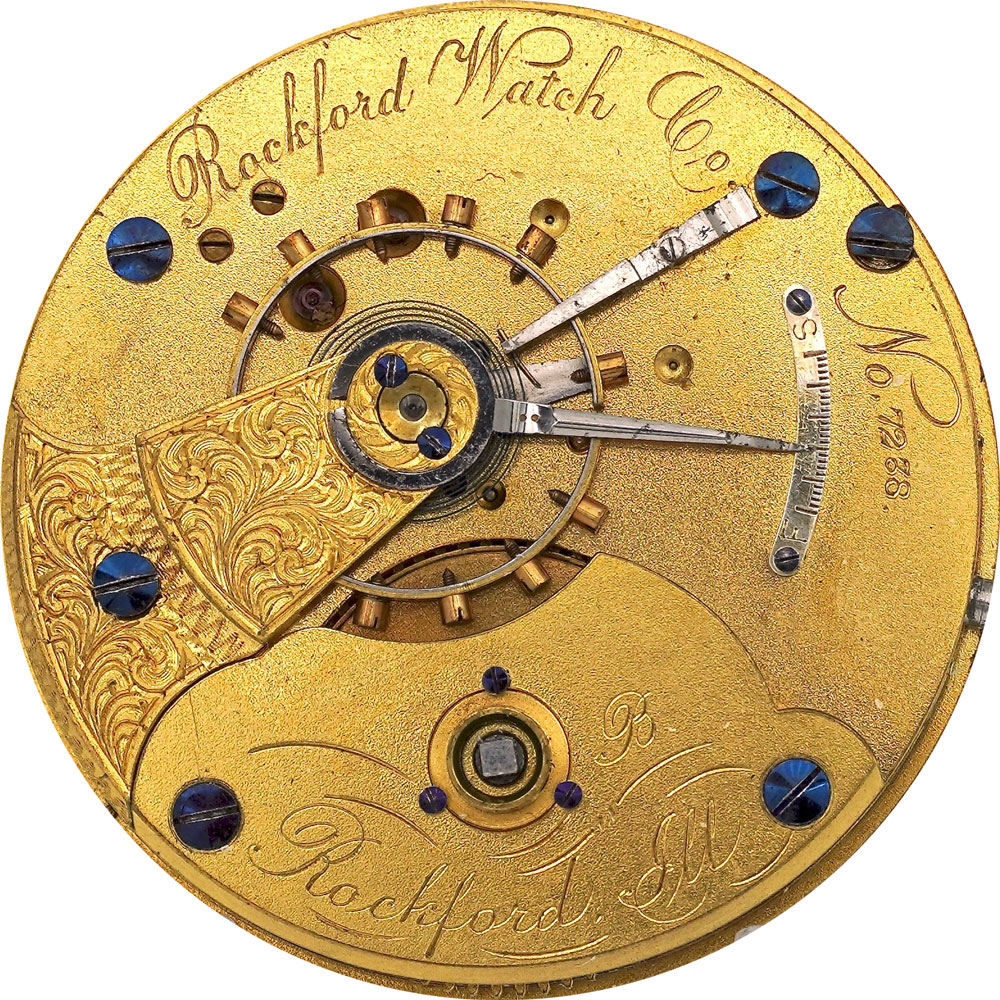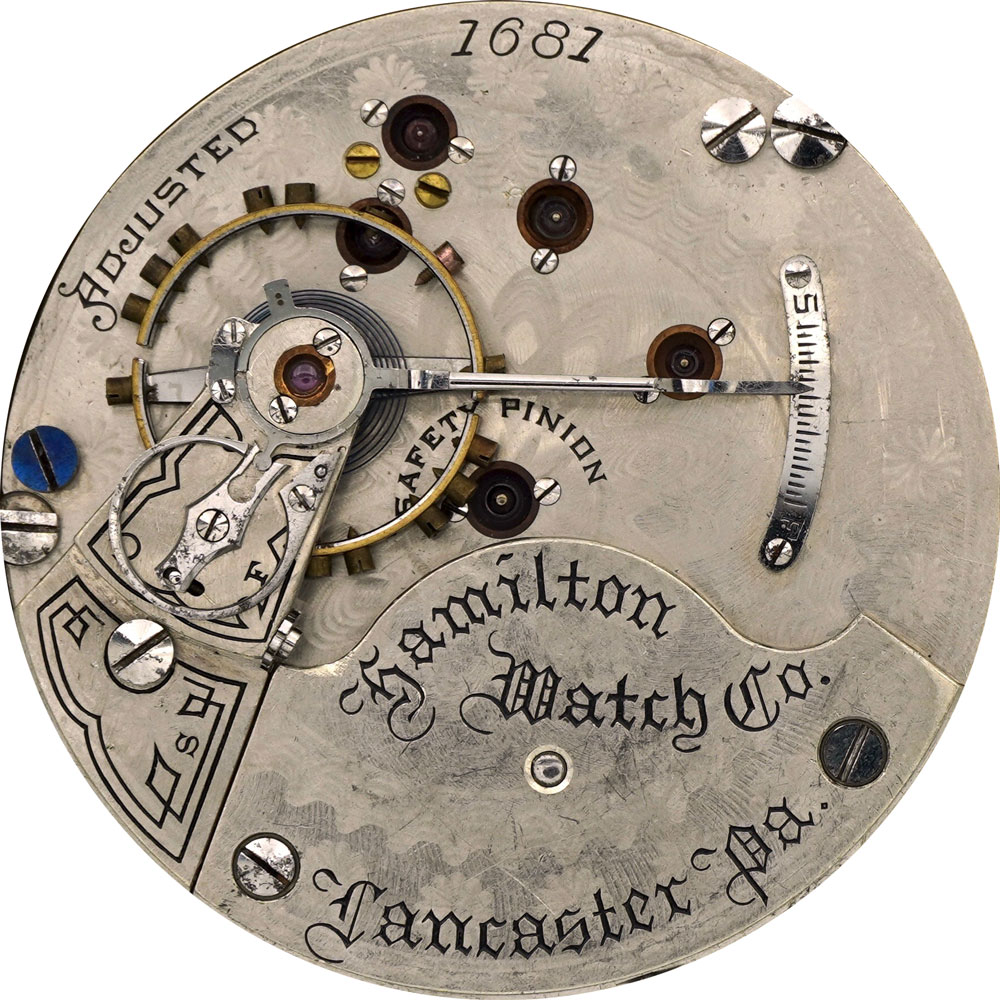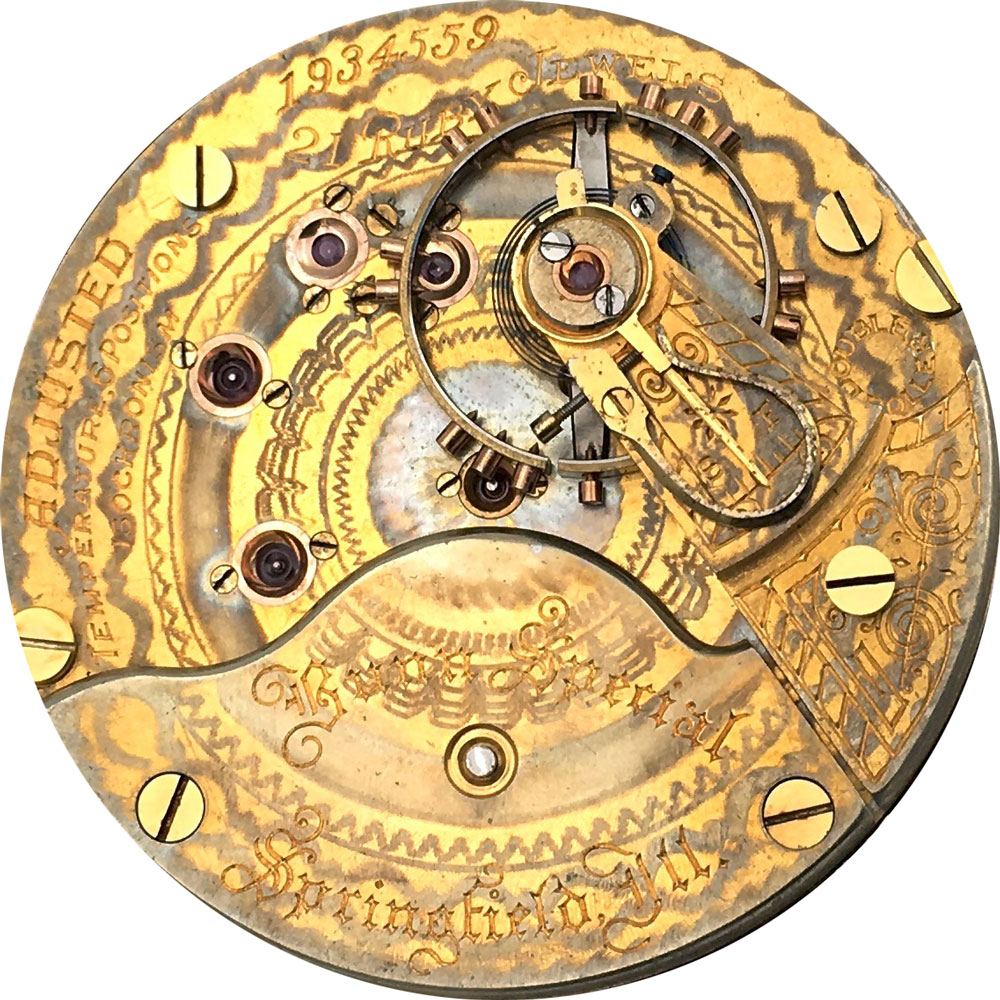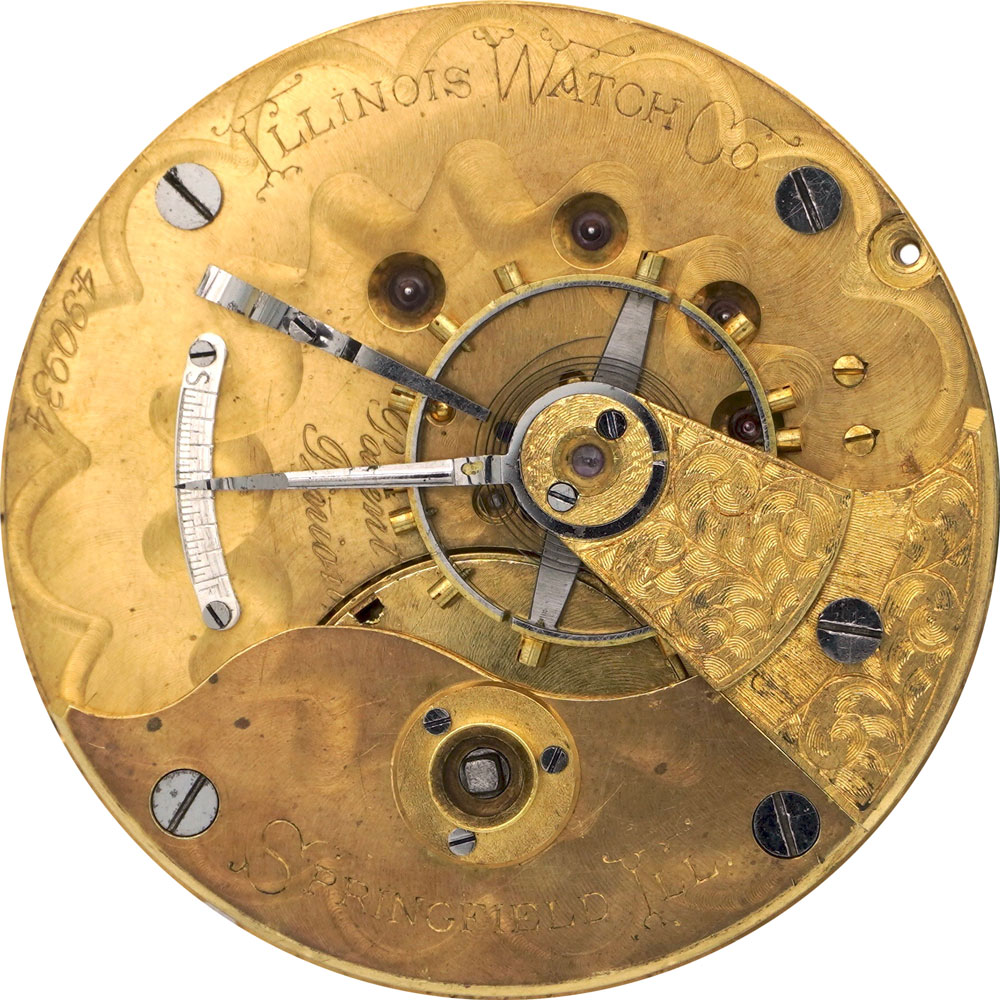Reference Library
Pocket Watch Movement Finishes
American pocket watch movements are usually found with either a Gilt or Nickel finish. Some manufacturers produced movements with a two-tone finish, using gilt damaskeening over nickel.
Note: The finishes referenced on this page apply to the movement finish inside the watch, not the case material.
Gilt Finish
Gilt movements are characterized by a gold-colored finish "gilded" on brass movement plates, typically engraved without color inlay. This finish was exetremely common before 1900. However, once manufacturers began offering nickel-finished movements, gilt became a less popular option and was more prevalent in lower quality movements.

Nickel Finish
Nickel movements are characterized by a silvery, often-polished, finish on the movement plates, and usually adorned with decorative damaskeening patterns. Once nickel movements became popular in the late 1800s, they often sold for a premium when compared to gilt movements with identical features.
The nickel material was more durable than gilded plates and offered a better surface for decorative machining methods.

Two-Tone Finish
Two-Tone movements are characterized by dual-finish patterns using a thin layer of damaskeened gilt on nickel plates. Two-Tone movements were usually reserved for premium watches due to the extra time and attention during the manufacturing process, resulting in some of the most beautiful movements ever produced. The term "two-tone" has been coined by modern collectors. Original factory descriptions in catalogs typically referred to this finish as "gold over nickel" or simply described the movement as "beautifully damaskeened." Two-Tone movements generally sold for a premium when compared to standard nickel and gilt with similar traits.

Damaskeened Gilt Finish
Often referred to by modern collectors as "gold-flashed," damaskeened gilt movements are characterized by a thin layer of gilt on nickel plates. Unlike two-tone movements, damaskeened gilt plates are designed to feature the polished golden finish over the entirety of the plates with finely applied designed etched or rubbed on the surface. The term most commonly used in original factory descriptions was "damaskeened gilt."